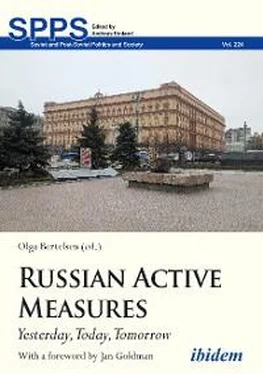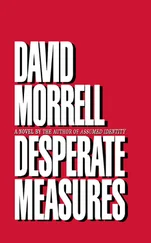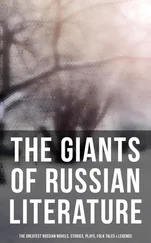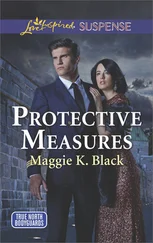Braunstein, Peter, and Michael William Doyle. “Introduction: Historicizing the American Counterculture of the 1960s and ’70s.” In Imagine Nation: The American Counterculture of the 1960s and ’70s , edited by Peter Braunstein and Michael William Doyle, 5–14. New York: Routledge, 2002.
Bukovsky, Vladimir. Judgment in Moscow: Soviet Crimes and Western Complicity , translated by Alyona Kojevnikov. Westlake Village, CA: Ninth of November Press, 2019.
Farmer, Kenneth C. Ukrainian Nationalism in the Post-Stalin Era: Myth, Symbols and Ideology in Soviet Nationalities Policy . The Hague, Boston, London: Martinus Nijhoff Publishers, 1980.
Fürst, Juliane. “If You’re Going to Moscow, Be Sure to Wear Some Flowers in Your Hair: The Soviet Hippie Sistema and Its Life In, Despite and With Stagnation.” In Reconsidering Stagnation in the Brezhnev Era , edited by Dina Fainberg and Artemy Kalinovsky, 123–46. Lanham, MD: Lexington Books, 2016.
_____. “We All Live in a Yellow Submarine: Life in a Leningrad Commune.” In Dropping Out of Socialism: Alternative Spheres in the Soviet Bloc , edited by Juliane Fürst and Josie McLellan, 197–207. Lanham, MD: Lexington Books, 2016.
Gamolsky, L., N. Efremenko, and V. Inshakov. Na barrikadakh sovesti: Ocherki, razmyshleniia, interviu. Dnipropetrovsk: Politizdat, 1988.
Keniston, Kenneth. “Youth, Change and Violence.” The American Scholar 37, no. 2 (1968): 227–45.
Kramer, Mark, ed. “Ukraine and the Soviet-Czechoslovak Crisis of 1968 (Part 1): New Evidence from the Diary of Petro Shelest.” Cold War International History Project Bulletin 10 (1998): 234–47.
Liamina, A., and L. Gamolskii. “Grazhdaninom byt obiazan.” Dnepr vechernii, 23 December 1982, p. 3.
Lysha, Raisa, Yurii Vivtash, and Orysia Sokulska, eds. Porohy: Vybrane , vol. 1–9. Kyiv: Smoloskyp, 2009.
Lystopad, Yu. “Ideolohichna borotba i molod (Notatky z oblasnoi naukovo-praktychnoi konferentsii).” Prapor iunosti, 17 December 1983, pp. 2–3.
Magnúsdóttir, Rósa. Enemy Number One: The United States of America in Soviet Ideology and Propaganda, 1945–1959. New York: Oxford University Press, 2019.
Pihoia, Rudolf. “Chekhoslovakia 1968 god (Part 1).” Novaia i noveishaia istoria , no. 6 (1994): 24–28.
Risch, William Jay. “Soviet ‘Flower Children’: Hippies and the Youth Counter-Culture in 1970s Lviv.” Journal of Contemporary History , 40, no. 3 (2005): 565–84.
_____. The Ukrainian West: Culture and the Fate of Empire in Soviet Lviv. Cambridge, MA: Harvard University Press, 2011.
Solomatin, Mykola. “Zhertvy chornoi magii.” Ranok, no. 1, January 1974, pp. 18–19.
Stites, Richard. Russian Popular Culture: Entertainment and Society since 1900. New York: Cambridge University Press, 1992.
Szemere, Anna. Up from the Underground: The Culture of Rock Music in Postsocialist Hungary . University Park, PA: The Pennsylvania State University Press, 2001.
Troitsky, Artemy. Back in the USSR: The True Story of Rock in Russia. London: Omnibus Press, 1987.
Tsipursky, Gleb. Socialist Fun: Youth, Consumption, and State-Sponsored Popular Culture inthe Soviet Union, 1945–1970 . Pittsburgh: University of Pittsburgh Press, 2016.
Valli, Roberta Suzzi. “The Myth of Squadrismo in the Fascist Regime.” Journal of Contemporary History 35, no. 2 (2000): 131–50.
Vasilieva, L. “Takim ne mesto sredi nas!” Dnepr vechernii, 10 January 1983, p. 3.
Vrublevskii, Vitalii K. Vladimir Shcherbitskii: zapiski pomoshchnika: slukhi, legendy, dokumenty . Kyiv: Dovira, 1993.
Yekelchyk, Serhy. Ukraine: Birth of a Modern Nation . New York: Oxford University Press, 2007.
Zhuk, Sergei I. Rock and Roll in the Rocket City: The West, Identity, and Ideology in Soviet Dniepropetrovsk, 1960 – 1985 . Baltimore, MD: Johns Hopkins University Press & Washington, D.C.: Woodrow Wilson Center Press, 2010.
_____. Soviet Americana: The Cultural History of Russian and Ukrainian Americanists. London and New York: I. B. Tauris, 2018.
_____. “‘The Disco Mafia’ and ‘Komsomol Capitalism’ in Soviet Ukraine during Late Socialism.” In Material Culture in Russia and the USSR: Things, Values, Identities , edited by Graham H. Roberts, 173–95. London and Oxford: Bloomsbury Publishing, 2017.
Derzhavnyi Arkhiv Dnipropetrovskoi oblasti (DADO, State Archive of Dnipropetrovsk Oblast), Dnipro, Ukraine.
Fond 19. Dnepropetrovskii obkom KPU (Kommunisticheskoi partii Ukrainy).
Haluzevyi Derzhavnyi Arkhiv Sluzhby Bezpeky Ukrainy (HDA SBU, Sectoral State Archive of the Security Service of Ukraine), Kyiv, Ukraine.
Fond 1. 2-GE Upravlinnia (Kontrrozvidky) MGB-KGB URSR.
Fond 16. Sekretariat GPU-KGB URSR.
Tsentralnyi Derzhavnyi Arkhiv Hromadskykh Obiednan Ukrainy (TsDAHOU, Central State Archive of the Civil Organizations of Ukraine), Kyiv, Ukraine.
Fond 7. Tsentralnyi Komitet LKSMU. Viddil kultury. Viddil propahandy i ahitatsii.
Interview with Ihor T., a retired KGB officer, 15 May 1991, Dnipropetrovsk, Ukraine.
Interview with Mikhail Suvorov, 1 June 1991, Dnipropetrovsk, Ukraine.
Interview with Oleksandr Beznosov, 19 July 2008, the Department of History, Dnipropetrovsk University, Dnipropetrovsk, Ukraine.
Interview with Stepan Ivanovich T., a retired KGB officer, 30 January 2019, Kyiv, Ukraine.
Interview with Stepan K., a retired SBU/KGB officer, 2 February 2019, Kyiv, Ukraine.
1Stepan Ivanovich referred to “active measures” that were defined by Vladimir Bukovsky as “[a]ctions of political warfare conducted by the Soviet and Russian security services (Cheka, OGPU, NKVD, KGB, FSB) ranging from media manipulation to outright violence.” See Vladimir Bukovsky, Judgment in Moscow: Soviet Crimes and Western Complicity , trans. Alyona Kojevnikov (Westlake Village, CA: Ninth of November Press, 2019), 629.
2I refer to the pioneering study by William Jay Risch, “Soviet ‘Flower Children’: Hippies and the Youth Counter-Culture in 1970s Lviv,” Journal of Contemporary History 40, no. 3 (2005): 565–84, and his book, The Ukrainian West: Culture and the Fate of Empire in Soviet Lviv (Cambridge, MA: Harvard University Press, 2011), esp. 237–44. Juliane Fürst is writing now a book about Soviet hippies. See her recent publications: “We All Live in a Yellow Submarine: Life in a Leningrad Commune,” in Dropping out of Socialism: The Creation of Alternative Spheres in the Soviet Bloc , eds. Juliane Fürst and Josie McLellan (Lanham, MD: Lexington Books, 2016), 197–207; and “If You’re Going to Moscow, Be Sure to Wear Some Flowers In Your Hair: The Soviet Hippie Sistema and Its Life In, Despite and With Stagnation,” in Reconsidering Stagnation in the Brezhnev Era , eds. Dina Fainberg and Artemy Kalinovsky (Lanham, MD: Lexington Books, 2016), 123–46. On some aspects of Soviet youth culture, see Gleb Tsipursky, Socialist Fun: Youth, Consumption, and State-Sponsored Popular Culture in the Soviet Union, 1945 – 1970 (Pittsburgh: University of Pittsburgh Press, 2016) and Sergei I. Zhuk, Rock and Roll in the Rocket City: The West, Identity, and Ideology in Soviet Dniepropetrovsk, 1960 – 1985 (Baltimore, MD: Johns Hopkins University Press & Washington, D.C.: Woodrow Wilson Center Press, 2010). For these publications, the authors (including myself) did not use KGB documents from the SBU Archive in Kyiv.
3According to Christopher Andrew, “throughout the Cold War, Soviet intelligence regarded the United States as its ‘main adversary.’ In second place at the beginning of the Cold War was the United States’ closest ally, the United Kingdom. In third position came France.” See in Christopher Andrew and Vasili Mitrokhin, The Sword and the Shield: The Mitrokhin Archive and the Secret History of the KGB (New York: Basic Books, 1999), 150.
Читать дальше












